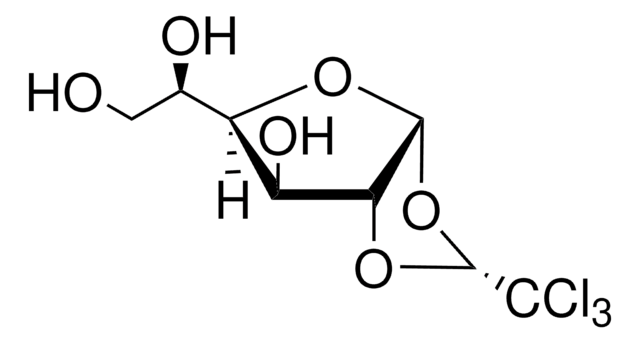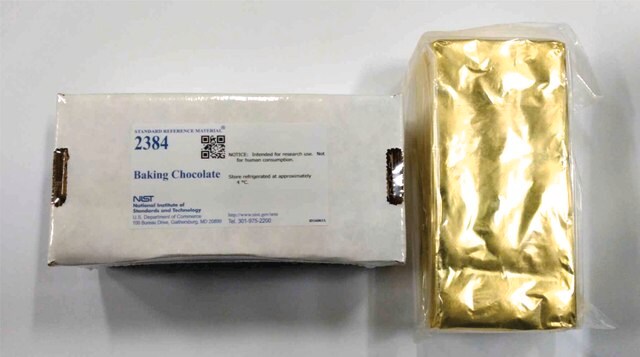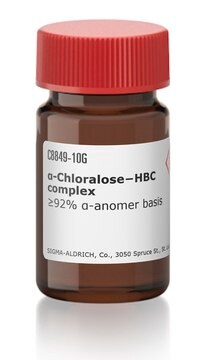23120
Chloralose
≥98.0% (chloralose, AT)
Sinónimos:
1,2-O-(2,2,2-Trichloroethylidene)-α-D-glucofuranose, Anhydro-D-glucochloral, Chloralose
About This Item
Productos recomendados
Quality Level
assay
≥98.0% (chloralose, AT)
form
powder
optical activity
[α]20/D +17±2°, 5 hr, c = 2% in ethanol
impurities
15% Beta-chloralose
mp
178-184 °C
solubility
water: soluble 1 gm in 225 ml at 15 °C
chloroform: slightly soluble
diethyl ether: soluble
glacial acetic acid: soluble
petroleum ether: insoluble
SMILES string
OC[C@@H](O)[C@H]1O[C@@H]2O[C@@H](O[C@@H]2[C@H]1O)C(Cl)(Cl)Cl
InChI
1S/C8H11Cl3O6/c9-8(10,11)7-16-5-3(14)4(2(13)1-12)15-6(5)17-7/h2-7,12-14H,1H2/t2-,3+,4-,5-,6-,7-/m1/s1
InChI key
OJYGBLRPYBAHRT-IPQSZEQASA-N
¿Está buscando productos similares? Visita Guía de comparación de productos
Biochem/physiol Actions
Components
Other Notes
signalword
Danger
hcodes
Hazard Classifications
Acute Tox. 3 Oral - Acute Tox. 4 Inhalation - Aquatic Acute 1 - Aquatic Chronic 1 - STOT SE 3
target_organs
Central nervous system
Storage Class
6.1D - Non-combustible acute toxic Cat.3 / toxic hazardous materials or hazardous materials causing chronic effects
wgk_germany
WGK 1
flash_point_f
Not applicable
flash_point_c
Not applicable
ppe
dust mask type N95 (US), Eyeshields, Faceshields, Gloves
Elija entre una de las versiones más recientes:
¿Ya tiene este producto?
Encuentre la documentación para los productos que ha comprado recientemente en la Biblioteca de documentos.
Nuestro equipo de científicos tiene experiencia en todas las áreas de investigación: Ciencias de la vida, Ciencia de los materiales, Síntesis química, Cromatografía, Analítica y muchas otras.
Póngase en contacto con el Servicio técnico









